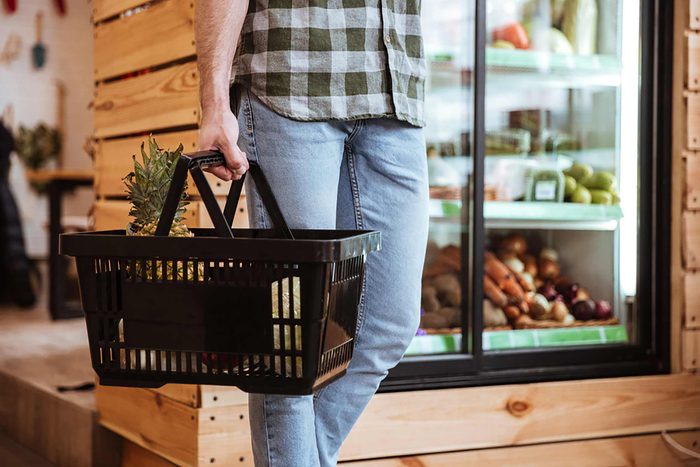
Walk through aisles you don’t use
The Reader’s Digest Quintessential Guide to Saving Money offers dozens of secrets tricks on how to save money on groceries. First up: Know your store. Whether you actively think about it or not, every grocery store has an aisle or two that has no temptations for you (pet food, paper goods, baby supplies, cosmetics, and so forth). Make that aisle your passageway to the departments you need at the back of the store. Why tempt yourself by using the candy aisle?
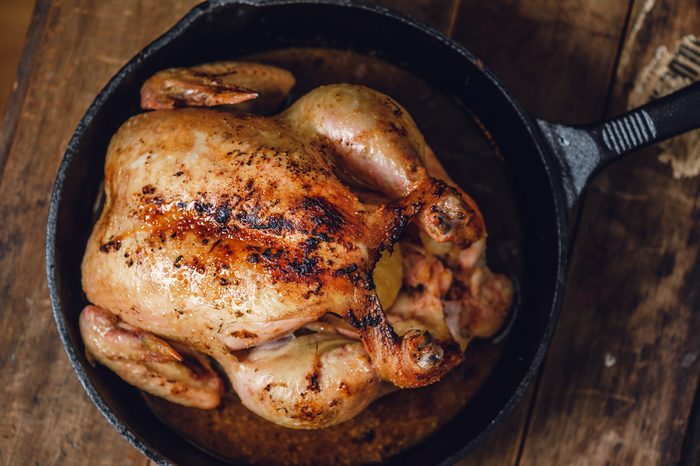
Buy chicken whole
Never buy chicken parts (breasts, wings) when you can buy the whole thing and make more meals from it, for pennies on the pound. Forget about fancy butchering: Using strong kitchen shears, cut the chicken up the breast bone, up the backbone, and then cut those halves in half again. Cut off wings and legs, and you have the kind of pieces that you’d pay big bucks for.
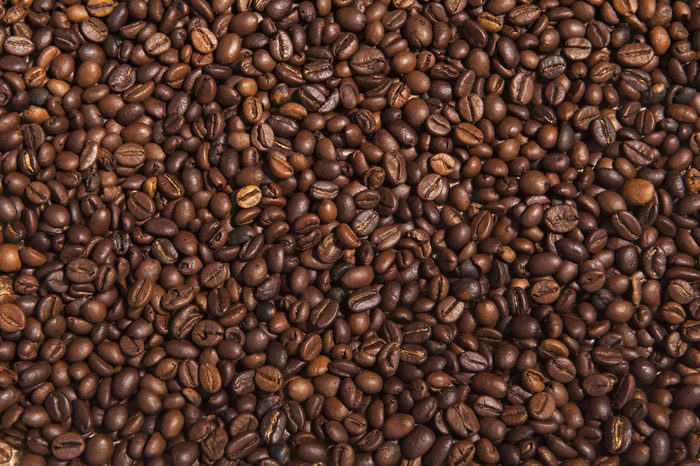
Cut the cost of gourmet coffee
Even coffee made at home can be pricey, if you have expensive taste in beans and roast. Here’s how to save money on groceries by mixing pleasure with savings: Combine one part of your favorite gourmet coffee with one part of a much less expensive store brand.
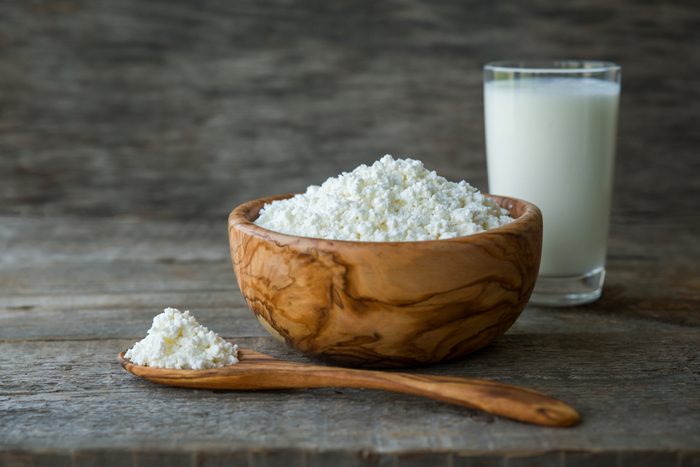
Turn cottage cheese upside down
Cottage cheese lasts twice as long than when stored right side up. Check out these 14 grocery store items you’re better off making at home.
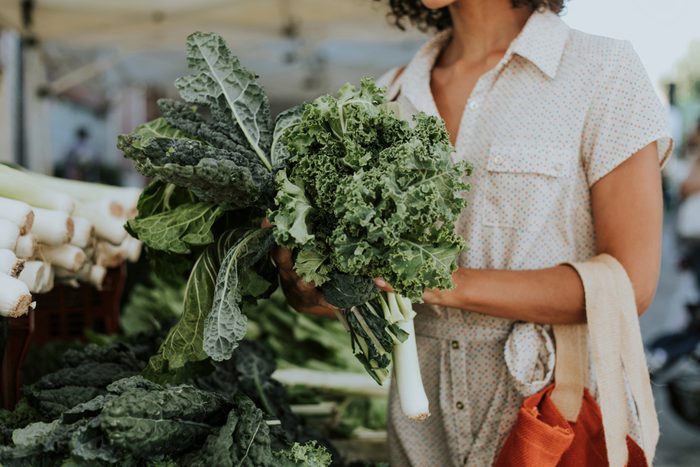
Shop farmers’ markets—late in the day
Yes, you can even learn how to save money on groceries even when you’re not at a grocery store. Farmers’ market sellers don’t want to bring unsold produce back home, so they often sell their inventory at reduced prices before the market closes. You may find sweet savings of up to 80 percent.
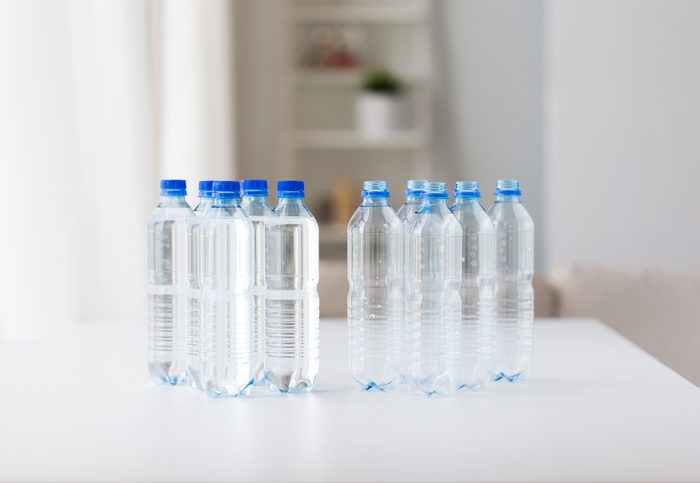
Pass by bottled water
Instead, buy a reusable water bottle. Assuming a store-bought bottle costs $1, you’ll recoup your costs after only eight or nine uses of the reusable bottle.

Read grocery ads before you shop
Grocery stores constantly have popular products on sale as a way to lure you into the store. And to get the word out, they advertise a lot—through mailings to your house, inserts in newspapers and local shopping guides, TV or radio commercials, and even online. They are worth studying each and every week. That’s because what is on sale changes on a weekly basis. Knowing that lettuce is on sale, you might map out menus that focus on that ingredient: a mixed salad one day, as a taco topping the next day, to wrap chicken for a low-carb dish the next.

Shop the perimeter of the store
Where you shop in the store plays a huge role in how to save money on groceries. Food essentials (produce, meats, dairy, and bread) are usually located around the store’s perimeter. Middle aisles have more costly prepared and processed foods. The more you steer clear of the inner aisles, the healthier and cheaper your groceries will be. Here are 10 more secrets for healthier grocery shopping.

Outsmart this “special” sale tactic
Here’s a well-kept secret: When a grocery store advertises a special—say, buy ten containers of yogurt for $5—you don’t have to buy the number of items they’re advertising. In this case, you could buy one container for 50 cents. Unless the store specifically states otherwise, you should buy as few as you want.
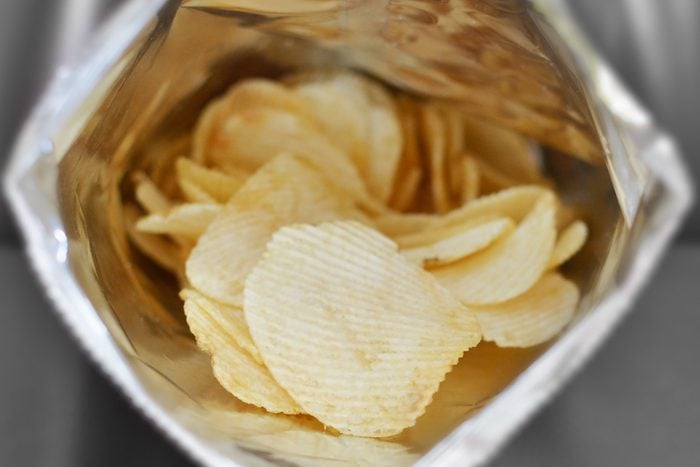
Do the math
One bag of chips is $1.49 and a seemingly same-size bag is $1.79. The cheaper one is the better deal, right? Not necessarily, if the higher-priced bag has a couple more ounces of chips. When learning how to save money on groceries by comparing prices, always compare price per pound (or ounce or pint). It’s the only objective way to compare costs. These are the 50 unhealthiest things you can buy at the supermarket.

Study your grocery store’s selling patterns for sales
Grocery store sales often occur in patterns. For example, we know of a store that puts ice cream on a “buy one, get one free” sale on the third week of every month. On the first week, it’s only a dollar off. Learn the patterns and hold off buying these items until you know that they’ll be at their rock-bottom prices—then buy enough to last you until the great sale runs again. Looking to get the most value for your money? Head to these cheap grocery stores to make the most of your buck.

Splurge on extra newspapers
If your Sunday newspaper offers a high-value coupon for an item you buy often, it may be worth the cost to buy extra copies of the paper for extra coupons, or to ask neighbors if you can have the coupon inserts from their papers. This is particularly worthwhile if you know that an item you want is a “buy one, get one free” sale; you can then get four for the price of two and have ample supplies in your pantry.

Go online to save
More and more websites are offering coupons you can print out. Before you go shopping, search for the name of a product on your shopping list, plus the word “coupon.” Just be careful—some sites want lots of personal information in exchange for access to coupons or discounts. Read the fine print and be sure it is a reputable website before surrendering personal info. Keep an eye out for these things you should always buy at the supermarket—besides food.
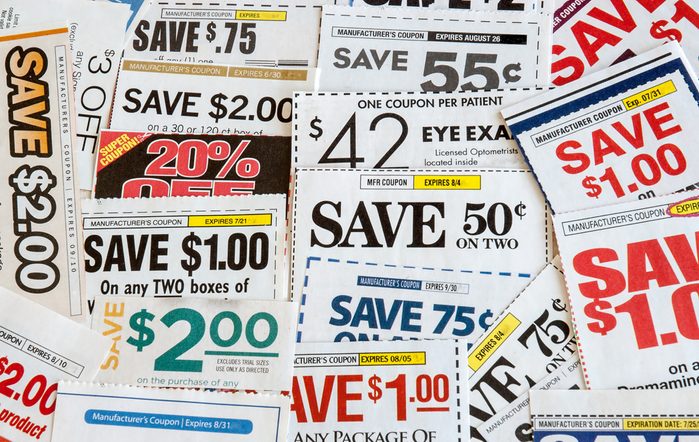
Layer, layer, layer
Extreme couponers arguably know how to save money on groceries more than anyone else. Here’s one of their secrets: Use a manufacturer’s coupon with items already on sale at the grocery store. Some people call this “layering,” others call it “stacking”—but it’s really a simple way of saving. Say a $1.99 package of taco shells is on sale for $1.49. If you have a 50-cents-off coupon and the store doubles coupons, you’ll pay only 49 cents for it.
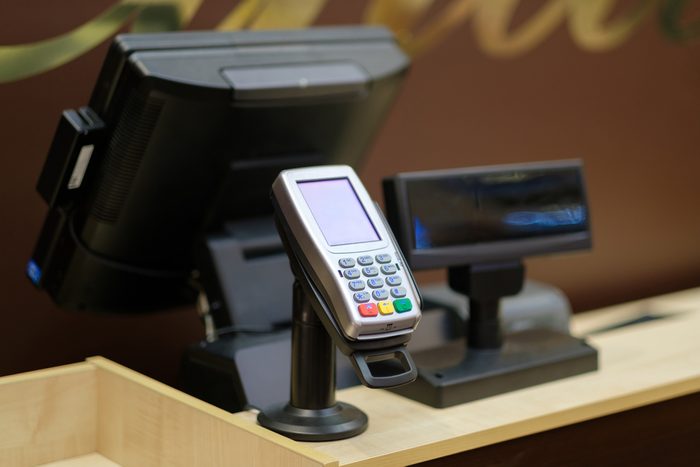
Watch the register
You’ve probably seen those investigative shows that uncover just how many errors supermarket scanners make—the numbers are staggering. Knowing this, keep a watchful eye on the cashier’s display as the cashier scans each product. Make sure that discounts for sales and coupons are applied. Make sure that the clerk keys in the proper codes for perishables without price tags (so you’re not paying for exotic mushrooms when you’re buying green peppers). Then, be sure to keep your receipt. This is a good practice for a few reasons. If the item is on sale but doesn’t ring up with the sales price, you can bring the receipt back to the store for a refund. If you get home and one of your items is damaged or has a broken seal, you can easily return it. Finally, many register tapes are printed with valuable coupons on the reverse side. These are the 27 foods you should never buy again.
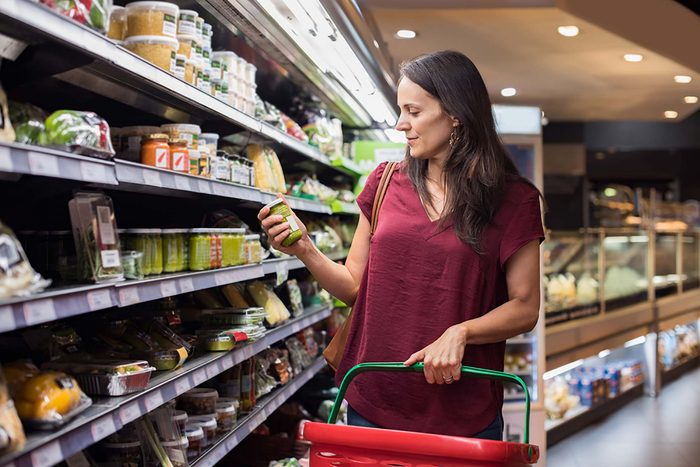
Don’t fall for limits
Keep your money in your purse when you see signs like “Limit six per customer.” Stores know that customers will buy more of an item if they think there’s a shortage—and there generally isn’t.

Shop less often
Try to stretch out the time between grocery-shopping trips. Instead of going once a week, go once every two weeks. You’ll be forced to make your current food last longer and use up the food sitting patiently in the pantry and freezer. Check out these 20 savings secrets from America’s favorite supermarket chains.
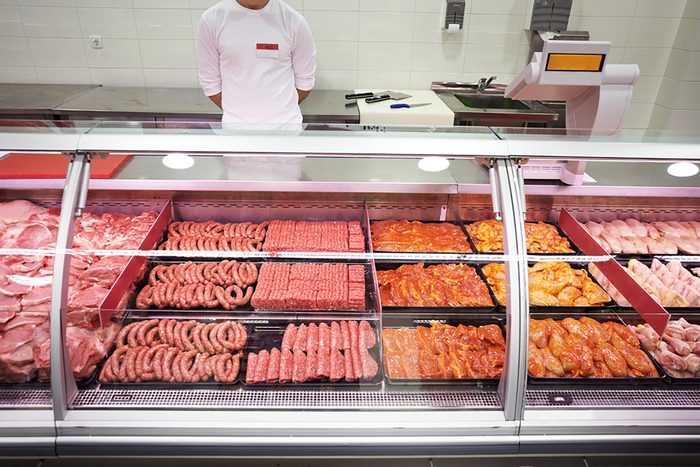
Befriend your butcher
Here’s how to save money on groceries in the meat department. You know that tougher meats are less expensive than tender meats. But did you know that many butchers will run these cheaper cuts through the tenderizer if you ask? Your tough cut will turn into a tender bite at no cost.
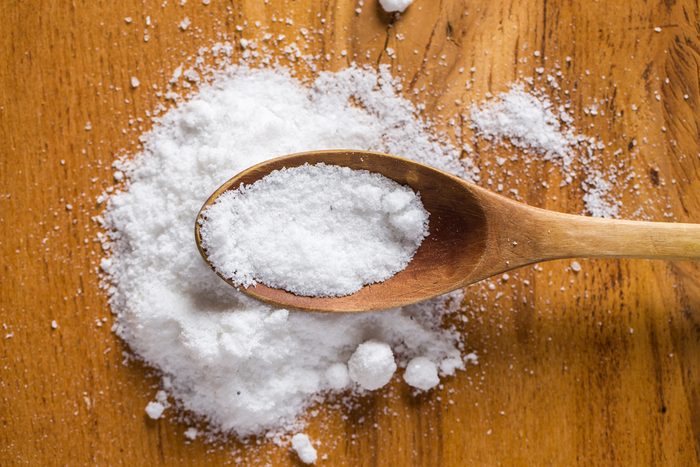
Use kosher salt
Inexpensive kosher salt is not only tastier than regular table salt; it’s also more frugal. Each flake or crystal is far bigger than its table-salt cousin, which means that a single pinch will go a very long way. This saves you money in the long run. Be sure to also look out for these 50 supermarket tricks you still fall for.
